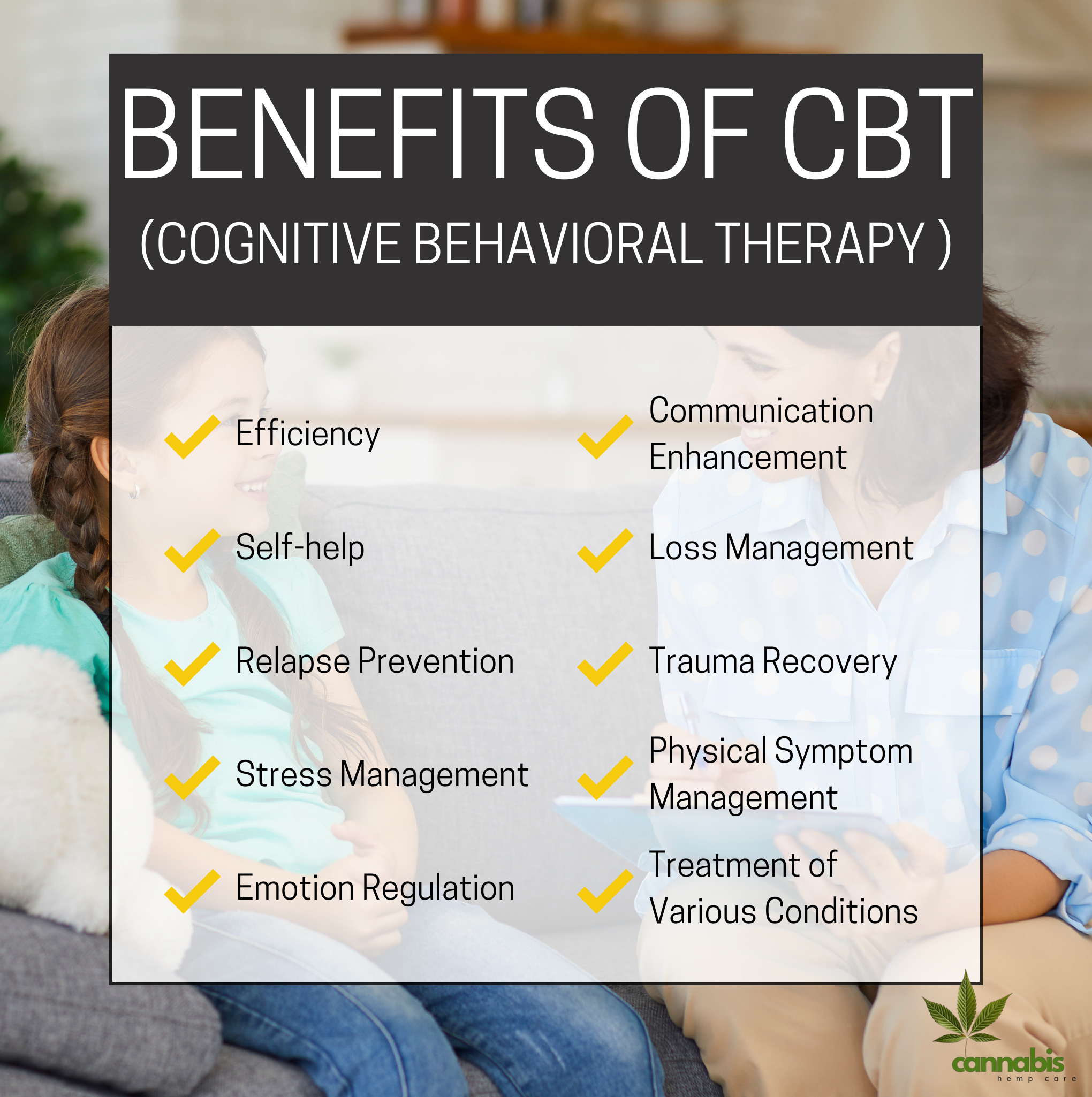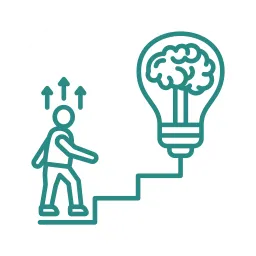Cognitive Behavioral Therapy (CBT) is a form of therapy that assists people in recognizing and altering harmful or disruptive thoughts that negatively impact their actions and feelings.1
- What Is Cognitive Behavioral Therapy?
- Types Of Cognitive Behavioral Therapy
- Cognitive Behavioral techniques
- Things to Consider With Cognitive Behavioral Therapy
- Why It’s done
- Benefits Of CBT
- How Long Does Cognitive Behavioral Therapy Take To Work
- Cost Of Cognitive Behavioral Therapy Session
- Duration Of A Typical Cognitive Behavioral Therapy Session
- Risks
- Conclusion
- FAQs
What Is Cognitive Behavioral Therapy?
CBT is a widely used form of talk therapy. In this structured approach, you collaborate with a mental health professional for several sessions. It merges cognitive and behavioral therapies by pinpointing and altering harmful thoughts, emotional responses, or behavior patterns and substituting them with more beneficial ones.
CBT aims to modify the automatic negative thoughts that can intensify emotional issues, depression, and anxiety. These involuntary negative thoughts can adversely affect our mood. With CBT, these erroneous thoughts are detected, contested, and replaced with more balanced, realistic thoughts.
Types Of Cognitive Behavioral Therapy
CBT incorporates a variety of methods and strategies that tackle our thoughts, feelings, and actions. These can vary from organized psychotherapies to self-help methods.2 Here are some specific types of therapeutic approaches that involve cognitive-behavioral therapy:
- Cognitive therapy: This focuses on pinpointing and altering incorrect or distorted thought patterns, emotional responses, and behaviors.
- Dialectical behavior therapy (DBT): This deals with harmful or troubling thoughts and actions while integrating treatment strategies such as emotional regulation and mindfulness.
- Multimodal therapy: This proposes that psychological problems must be addressed by tackling seven different but interconnected modalities: behavior, affect, sensation, imagery, cognition, interpersonal factors, and drug/biological considerations.
- Rational emotive behavior therapy (REBT): This involves pinpointing irrational beliefs, actively challenging these beliefs, and ultimately learning to recognize and alter these thought patterns.

Cognitive Behavioral techniques
CBT goes beyond just recognizing thought patterns. It employs a broad array of strategies to assist individuals in overcoming these patterns. Here are some techniques commonly used in cognitive behavioral therapy:
- Recognizing Negative Thoughts: Understanding the thoughts, emotions, and situations that lead to undesirable behaviors is crucial. This process can be challenging, particularly for those who find introspection difficult. However, taking the time to recognize these thoughts can lead to self-discovery and provide valuable insights that are vital to the therapeutic process.
Things to Consider With Cognitive Behavioral Therapy
When thinking about Cognitive Behavioral Therapy (CBT), there are several aspects to consider:
- Difficulty in Change: Acknowledging that certain thoughts are not helpful and then altering them can initially be a tough task.
- CBT Structure: Contrary to some other therapies, CBT doesn’t concentrate on the underlying, subconscious resistance to change. Instead, it’s highly structured and aids you in becoming aware of incorrect or negative thinking, enabling you to perceive challenging situations more clearly and respond to them in a more effective manner.
- Emotional Discomfort: CBT might lead you to delve into distressing feelings, emotions, and experiences, which could result in emotional discomfort. You might find yourself crying, becoming upset, or feeling angry during a tough session. You might also feel physically exhausted.
- Exposure Therapy: Certain forms of CBT, like exposure therapy, might necessitate confronting situations you would prefer to avoid. This could result in temporary stress or anxiety.
- Collaboration with a Skilled Therapist: Collaborating with a proficient therapist can mitigate any risks. The coping mechanisms you acquire can aid you in managing and overcoming negative emotions and fears.
- Customization for Each Client: Despite the belief of some people that CBT is overly formulaic or standardized, the therapy is inherently tailored to each client, through the content of negative thoughts and the techniques used to challenge them.3
Why It’s done
CBT is employed to address a variety of problems. It’s frequently the therapy of choice because it can swiftly assist you in identifying and dealing with specific issues. It typically necessitates fewer sessions than other forms of therapy and is conducted in a structured manner. CBT is a beneficial tool for tackling emotional challenges.
For instance, it may assist you in:
- Controlling symptoms of mental illness
- Preventing a recurrence of mental illness symptoms
- Treating a mental illness when medications are not a suitable option
- Learning techniques to handle stressful life situations
- Identifying methods to control emotions
- Resolving relationship disputes and learning improved communication methods
- Dealing with grief or loss
- Overcoming emotional trauma associated with abuse or violence
- Dealing with a medical illness
- Managing chronic physical symptoms
Mental health disorders that may see improvement with CBT include depression, anxiety disorders, phobias, PTSD, sleep disorders, eating disorders, obsessive-compulsive disorder (OCD), substance use disorders, bipolar disorders, schizophrenia, and sexual disorders.
In some instances, CBT is most effective when used with other treatments, such as antidepressants or other medications.

Benefits Of CBT
Cognitive Behavioral Therapy (CBT) offers a multitude of advantages, such as:
- Efficiency: CBT is among the most potent treatments for disorders where anxiety or depression is the primary concern.
- Self-help: CBT empowers you to become your counselor. The skills acquired through CBT equip you to manage life’s challenges better.
- Relapse Prevention: CBT aids in controlling the symptoms of mental illness and preventing a recurrence of these symptoms.
- Stress Management: It imparts techniques for dealing with stressful life situations.
- Emotion Regulation: CBT assists in identifying methods to control emotions.
- Communication Enhancement: It can resolve relationship disputes and impart better communication methods.
- Loss Management: CBT can assist in dealing with grief or loss.
- Trauma Recovery: It can aid in overcoming emotional trauma associated with abuse or violence.
- Physical Symptom Management: CBT can assist in coping with a medical illness or managing chronic physical symptoms.
- Treatment of Various Conditions: CBT can enhance a broad spectrum of mental health disorders, including depression, anxiety disorders, phobias, PTSD, sleep disorders, eating disorders, obsessive-compulsive disorder (OCD), substance use disorders, bipolar disorders, schizophrenia, and sexual disorders.

How Long Does Cognitive Behavioral Therapy Take To Work
Typically, Cognitive Behavioral Therapy (CBT) involves weekly sessions lasting 30-60 minutes over a period of 12 to 20 weeks. However, an emerging alternative is intensive CBT (I-CBT), which consists of much longer sessions condensed into a month, week, or weekend, or sometimes even a single eight-hour session.
Cost Of Cognitive Behavioral Therapy Session
The price of a Cognitive Behavioral Therapy (CBT) session can significantly differ based on factors such as location, the therapist’s qualifications, and the duration and regularity of the sessions. Here are some rough estimates:
- In the Philippines, the cost of a therapy session can be anywhere between ₱1,000 and ₱4,500.4
- In the United Kingdom, a session typically costs between £60 and £100.5
- In the United States, the usual rate is between $60 and $120 per session. However, some therapists or clinics provide therapy on a sliding scale, meaning the fees vary according to income.6
Duration Of A Typical Cognitive Behavioral Therapy Session
A standard Cognitive Behavioral Therapy (CBT) session typically spans about 30 to 60 minutes.7 The sessions usually take place once a week or once every two weeks, depending on the individual’s needs. The entire treatment course generally extends over 5 to 20 sessions, but this can fluctuate based on the individual’s progress and the complexity of their issues. The treatment may proceed with additional sessions that are scheduled further apart, allowing the individual to continue practicing the skills independently.
Risks
Generally, Cognitive Behavioral Therapy (CBT) carries minimal risk. However, you might experience emotional discomfort occasionally. This is because CBT might lead you to delve into distressing feelings, emotions, and experiences. You might find yourself crying, becoming upset, or feeling angry during a tough session. You might also feel physically exhausted.
Certain types of CBT, like exposure therapy, might necessitate confronting situations you would prefer to avoid — for instance, airplanes if you have a fear of flying. This could result in temporary stress or anxiety. Nonetheless, collaborating with a proficient therapist can mitigate any risks. The coping mechanisms you acquire can aid you in managing and overcoming negative emotions and fears.

Conclusion
Cognitive Behavioral Therapy is a potent instrument for enhancing mental health. Pinpointing and modifying negative thought patterns can assist individuals in managing a broad spectrum of mental health disorders and effectively dealing with life’s challenges. It’s always advisable to consult with a healthcare professional or a certified therapist if you’re contemplating CBT.
FAQs
Sources
- Cherry, Kendra. “What Is Cognitive Behavioral Therapy (CBT)?” Verywell Mind, 2022, www.verywellmind.com/what-is-cognitive-behavior-therapy-2795747. Accessed 4 Nov. 2023. ↩︎
- Mayo Clinic. “Cognitive Behavioral Therapy.” Mayoclinic.org, Mayo Clinic, 16 Mar. 2019, www.mayoclinic.org/tests-procedures/cognitive-behavioral-therapy/about/pac-20384610. Accessed 4 Nov. 2023. ↩︎
- “Adapting Cognitive Behavioral Therapy to Each Client | Psychology Today.” Www.psychologytoday.com, www.psychologytoday.com/us/blog/all-about-cognitive-and-behavior-therapy/202110/adapting-cognitive-behavioral-therapy-each. Accessed 4 Nov. 2023. ↩︎
- Moneymax. “Mental Illness in the Philippines: Cost of Therapy and Medication.” Moneymax, 2 Sept. 2020, www.moneymax.ph/personal-finance/articles/cost-of-therapy-philippines. Accessed 4 Nov. 2023. ↩︎
- National Health Service. “Cognitive Behavioural Therapy (CBT).” NHS, NHS, 10 Nov. 2022, www.nhs.uk/mental-health/talking-therapies-medicine-treatments/talking-therapies-and-counselling/cognitive-behavioural-therapy-cbt/overview/. Accessed 4 Nov. 2023. ↩︎
- Psychotherapy Cost: Costs and Opportunities to Consider – CBT – Psychotherapy and Methods. 25 Dec. 2021, www.cbtcognitivebehavioraltherapy.com/psychotherapy-cost-and-deals/. Accessed 4 Nov. 2023. ↩︎
- “What Does Cognitive Behavioral Therapy Involve? How Does It Work?” MedicineNet, www.medicinenet.com/what_does_cognitive_behavioral_therapy_involve/article.htm. Accessed 4 Nov. 2023. ↩︎




































